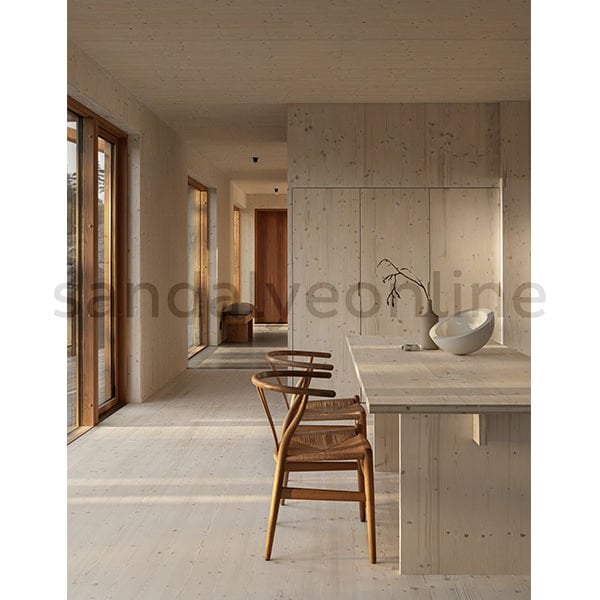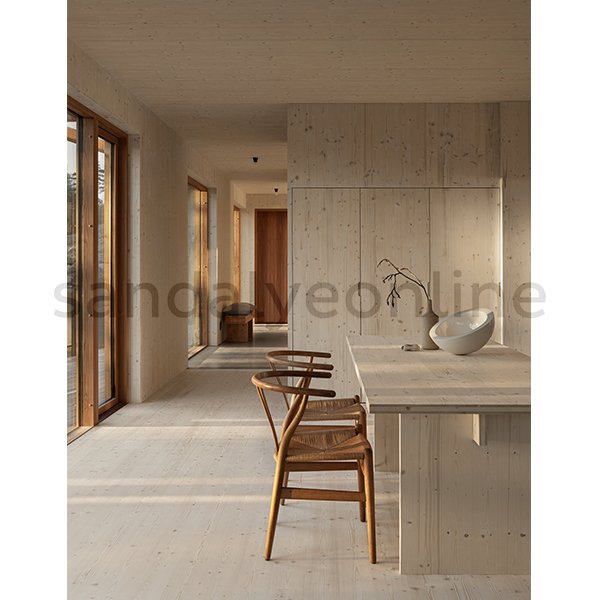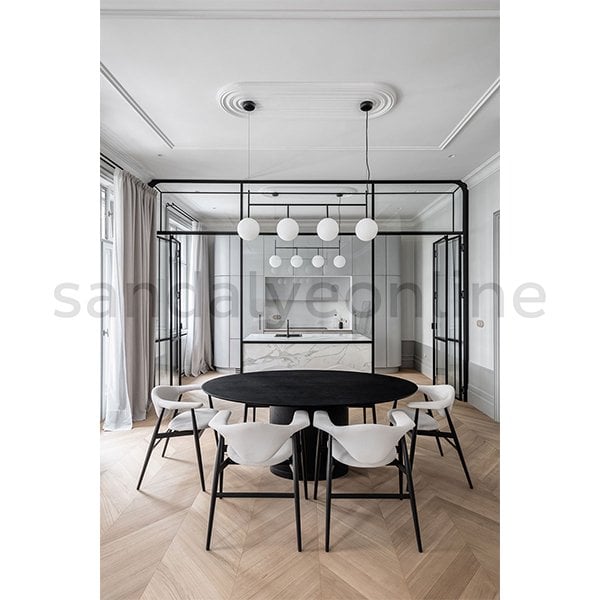Minimalist İç Mimari Stili

Minimalist İç Mimari Stili
Minimalist iç mimari stili söz konusu olduğunda birçoğumuzun aklına, temel çizgileri ve nötr renkleri olan bir tarz gelir. Minimalizm 60'larda doğdu ve o dönemin sanatsal ortamını temsil eden radikal değişimden geliyor.O zamanın sanatında, eserlerde gerçekliğin indirgenmesi, ifadesizlik ve duygusal soğukluk ile karakterize edilen bir hareket vardı.Minimal veya minimalizm terimi, 1965 yılında yükselen trend üzerine bir makale yazdığı İngiliz filozof Richard Wollheim tarafından ortaya atıldı.Bu felsefi değişim modadan tasarıma kadar tüm yaratıcı disiplinlere çok hızlı bir şekilde yayılmıştır.

Minimal tarz genellikle, Mies Van Der Rohe tarafından icat edilen hareketin mükemmel sloganı olan "az daha fazladır" ifadesi ile açıklanır.Manifestolarından birinde minimalizmin öze indirgeme olduğunu, moderniteye ayak uydurmayı unutmadan her şeyin nasıl gerekli temel unsurlara indirgenmesi gerektiğini anlatmıştır.İşte tam da bu nedenle minimalizmin birçok biçimi vardır. Yıllar içinde gelişen ve evrilen çeşitli tarzlara çokça adapte olmuştur.
Minimal Stil Kime Uygundur?
Minimalist aşırılıktan kaçınır ve esasa odaklanır. Bu birey hayata derin bir maneviyat ve bilgelik duygusuyla yaklaşır, doğanın güzelliğini ve kaliteli nesneleri takdir eder, ancak gerçekten şükranla dolmanın tek yolunun yavaşlamak ve dikkat etmek, odaklanmak olduğunu bilir.

Minimal tarzın çoğu zamanAz Daha Çoktur ifadesi ile açıklandığı doğrudur. Ancak bu kavram çoğu zaman yanlış yorumlanır. Tasarım dünyasında minimal tarzın ruhu, gereksizleri ortadan kaldıran ve dikkati önemli olana odaklayan bir araç olarak ifade ediliyor.Birçoğu minimal tarzdaki evleri soğuk, anonim ve pek hoş karşılanmayan alanlarla ilişkilendirir.Bu yanlış bir kavramdır: stil, çıplak bir evi değil, esas olanın bir fikrini teşvik eder.
• Çizgiler ve şekiller çok önemlidir
• Doğal ışık bir mobilya parçasıdır
• Doğrusallık ve geometri
• Ağırlıklı olarak ayık ve nötr renkler
• Malzemeler kalitelidir
• Minimum alan ayak izi vardır
Minimal tarzda bir mobilyada, malzemelere ve şekillerine çok önem vermeyi seçiyoruz. Minimalizm her zaman geometrinin düzenliliğine kadar izlenebilen şekilleri takip eden mobilyaları öne çıkarma eğilimindedir ve mekanların doğrusallığı tasarım seçiminin ana yönü haline gelir.Bir diğer önemli özellik, alanın kapladığı alanın minimuma, yani esasa indirgenmesidir.Minimal tarzdaki evler her zaman olduğundan daha büyük görünür. Çünkü odalarda az sayıda mobilya bulunur ve doğal ışığında başrol oyuncusu olmasına izin verir.
Minimalizm Renkleri
Minimalist iç mimari stili demek sadece beyazdan ibaret bir tasarım değildir!Bu tarzda bir ev için renk seçimini düşündüğünüzde her zaman beyazı düşündüğünüz doğrudur. Ancak mutlaka bir zorunluluk değildir.Beyaz, görsel engelleri olmayan bir alanın temel kavramını geliştirmeye çok yardımcı olur. Ancak diğer renkler ve kaplamalarla birleştirilebilir.Cam ve metal gibi parlak malzemeler minimalist evlerde her zaman mobilyalarda ve tezgahlarda bulunurken, zeminler genellikle beton, reçineler veya desensiz diğer basit yüzeylerdir.

Dekorasyon ve Mobilya Seçimi
Minimal tarzdaki evlerde neredeyse hiçbir zaman dekoratif öğeler bulunmaz.Dekorasyonlar "daha fazla” ile eş anlamlıdır. Minimum objeler vazgeçilmez unsurlardır ve mekanların düzenini ve doğrusallığını bozarlar.Bu, evin çıplak ve kişiliksiz olduğu anlamına gelmez. Aksine, döşemeyi istemenin, evin mimarisine önem vermenin ve özenle seçilmiş mobilya parçalarının seçimini yansıtır.Sanat ise genellikle minimal evlerde, modern ve her zaman soyut sanatın büyük tuvallerinde veya önemli heykellerde bulunur. Ancak onların da "nefes alacak" bir alana sahip olması ve belirli bir önemi olması gerekir.

Mobilyaların düzenlenmesi önemli bir özelliktir.Bu alanda uzaya öncelik verilir.Bir evin çeşitli odaları geniş ve havadar olmalı, mobilya boyutları minimalist iç mimari stili için minimuma indirilmelidir.Genellikle açık alanlarda mobilyalar, duvarların açık ve görünür kalmasına izin verecek şekilde odanın ortasına yerleştirilir.Duvar üniteleri genellikle asılıdır ve zemine dayanmaz, bu da dolu ve boş, boşluk ve hafifli karasında kontrast oluşturur.
